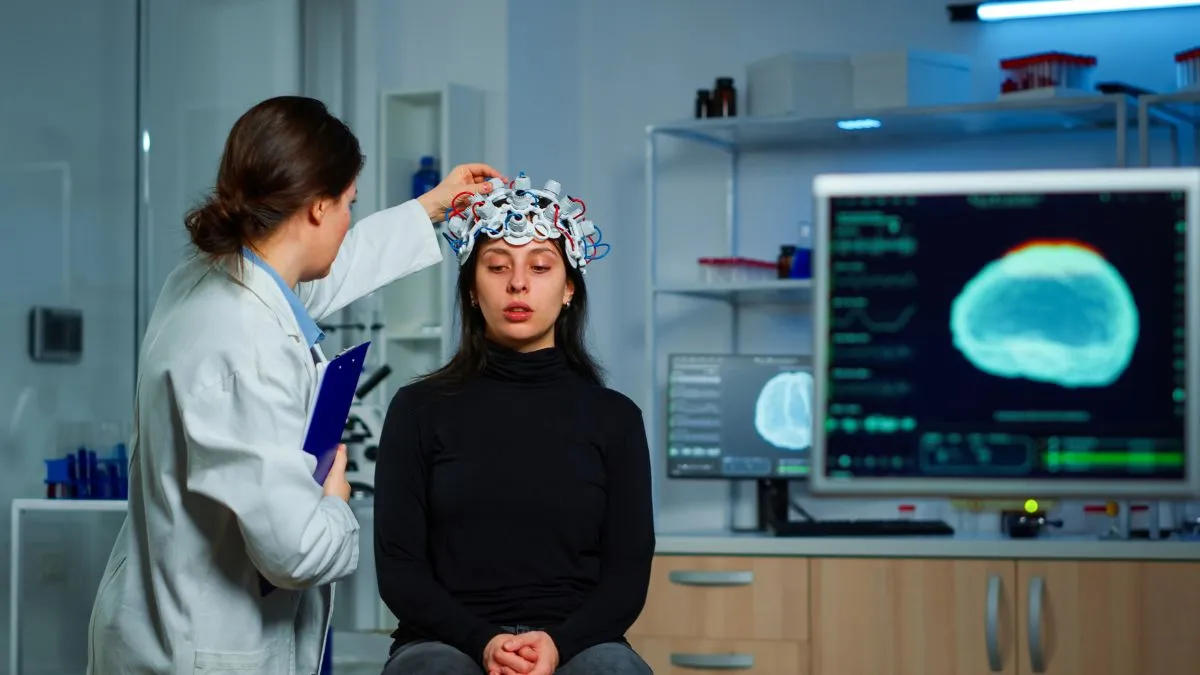
A brain haemorrhage, to a burst blood vessel in the brain (commonly called a brain aneurysm), is one of the most devastating medical emergencies, yet it is often mistaken for something as ordinary as a severe migraine or a stress-induced headache. This misjudgment can lead to dangerous delays in treatment, which is why it is often referred to as a missed condition.
Table of Content:-
What Is a Brain Aneurysm?
According to The Brain Aneurysm Foundation, a brain aneurysm can develop when a weak area in the wall of a blood vessel in the brain swells outward due to the constant pressure of blood flowing through it.
According to Dr Trimaan Singh (Consultant, Neuro-Intervention), Fortis Escort Hospital, Amritsar and Fortis Hospital, Jalandhar, “Most of these bulges remain small and harmless. But when one bursts, it causes sudden bleeding around and inside. This condition, called a brain haemorrhage, can damage brain tissue within minutes and become life-threatening if not treated quickly.”
How to identify a brain aneurysm?
The hallmark symptom of brain aneurysm internal bleeding is a sudden, extremely severe headache that patients often describe as the worst they have ever experienced.
Unlike common headaches, this strikes like a bolt of lightning, and may be accompanied by nausea, vomiting, drooping eyelids, blurred or double vision, stiff neck, or seizures.
In many cases, patients also lose consciousness suddenly. Sometimes, there may be a smaller leak before a full rupture, giving rise to a sentinel headache, which can be easily mistaken for other forms of headache.
Recognising this early and seeking immediate medical attention could make the difference between survival and tragedy.
Also Read: Stroke or Aneurysm? Doctor Explains the Life-Saving Difference
Why Is Awareness Important?
A PMC study shows that about half of those who suffer a ruptured aneurysm die within the first 24 hours, and many others succumb to complications if left untreated, within the next three months. This shows how alarming the statistics of the challenge are.
“Survivors often face lifelong challenges such as paralysis, speech and memory problems, or reduced quality of life due to permanent brain damage,” highlights Dr Singh.
People between the ages of 30 and 60, especially women, are at greater risk. Uncontrolled high blood pressure, smoking, excessive alcohol, drug abuse, and a family history of aneurysms further raise the chances of rupture.
Talking about risk factors and prevention of brain aneurysms, Dr Singh shares, “While some risk factors like age and genetics cannot be controlled, adopting a healthy lifestyle, avoiding smoking and substance use, and maintaining normal blood pressure can help reduce risk.”
Also Read: Aortic Aneurysm: Different Types And Their Treatments
Diagnosis and Treatment
Diagnosis with imaging techniques such as CT, MRI, or cerebral angiography can identify aneurysms before they rupture. Earlier, treatment was limited to open brain surgery, where doctors placed a tiny clip on the weak blood vessel to stop it from bleeding.
“But today, thanks to medical advances, a safer and less invasive method called endovascular therapy (where doctors treat the blood vessel from inside using thin tubes inserted through the arteries) has become the preferred approach worldwide,” shares Dr Singh.
Endovascularly, options include different forms of coiling or flow diverter placement to stop blood flow into the aneurysm and prevent re-bleeding. With advances in neuro-intervention, survival rates have improved, especially with timely treatment.
Final Word
A ruptured aneurysm is a race against time. Every minute counts, and reaching the hospital at the earliest can make the difference between life, disability, and death. Greater awareness among the public about this condition is the first step toward reducing its devastating impact.
Also watch this video
FAQ
What is a brain aneurysm?
When a blood vessel in the brain becomes weak and bulging, looking like a blister or balloon, it is called a brain aneurysm or cerebral aneurysm.Is brain aneurysm dangerous?
A silent or unruptured aneurysm doesn't produce any symptoms, but if the aneurysm is ruptured, it can be life-threatening. Rupture can cause bleeding in the brain, which can lead to brain stroke, coma or even death.What causes brain aneurysms?
The main causes of brain aneurysms are high blood pressure, chain-smoking, buildup of plaque in the arteries, existing renal conditions like polycystic kidney disease and drug abuse.
How we keep this article up to date:
We work with experts and keep a close eye on the latest in health and wellness. Whenever there is a new research or helpful information, we update our articles with accurate and useful advice.
Current Version
Oct 09, 2025 13:47 IST
Modified By : Chanchal SengarOct 09, 2025 13:38 IST
Modified By : Chanchal SengarOct 06, 2025 14:15 IST
Published By : Chanchal Sengar